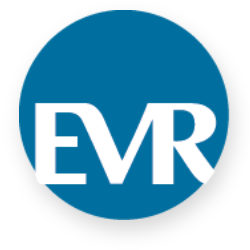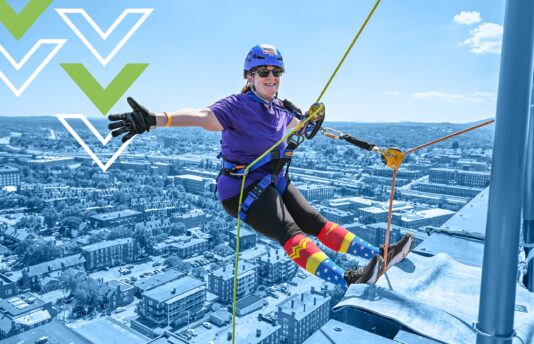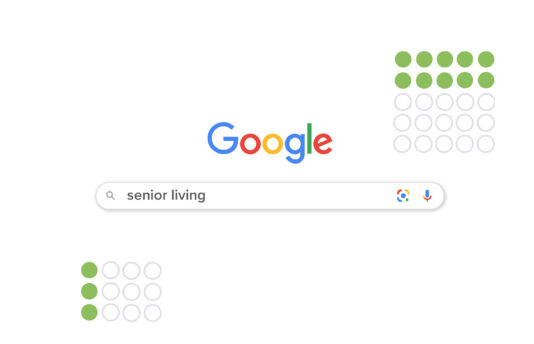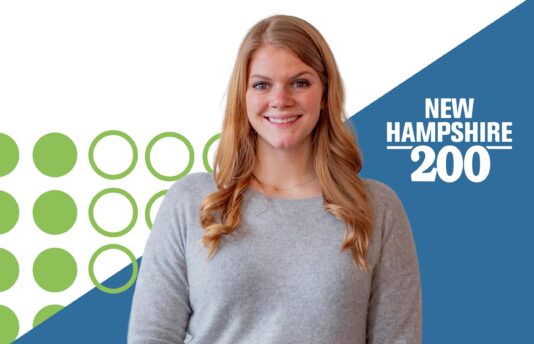It’s important to be ready to catch senior living prospects as soon as they start to research communities—or, even better, before they start. The sales process is long, and getting consumers to think about senior living as early as possible benefits not only marketers, but older adults who may not qualify for some communities if they wait too long.
For instance, some continuing care retirement communities (CCRCs) require residents to start in independent living to get all the benefits of a continuum of care for the rest of their lives. For admittance to independent living, consumers may have to demonstrate adequate physical health to qualify.
It’s never too early for people to start looking into senior living communities. That means marketers must be prepared with the materials and information needed to educate prospects early and often—and on every step of the way in their senior living journey.
A Long Sales Cycle
When it comes to seniors and moving to retirement communities, it will take 40% of prospects between three and six months to reach a decision. Almost 50 percent of independent living residents search for two years before moving in. That’s a long time for marketers to keep a consumer engaged and a brand top of mind.
That’s why preparation is critical to closing senior living sales. It takes, on average, 25 touchpoints to convert senior living prospects into customers across multiple channels. Making sure there’s content for all those touchpoints and nurturing prospects and leads through a lengthy process requires patience and planning.
The buying cycle takes so long because the decision to move to a senior living community can be emotional—it’s not a decision that’s taken lightly. No individual over 50 wants to think they’re “old.” For many, moving to senior living signals defeat, although nothing could be further from the truth with today’s vibrant senior living communities. Still, marketers have many objections to overcome, myths to debunk and plenty of educational opportunities.
Good sales counselors know the process takes time. They are prepared to walk prospects through the sales process from beginning to end, help them understand options, explain pros and cons, highlight the benefits of their senior living communities and decipher the different available options.
The Right Content at the Right Time
The buyer’s journey isn’t as linear as it used to be, and it is unique to each industry, but it does still encompass the classic steps of awareness, consideration and decision. Having the content appropriate for each part of that journey is vital to keeping prospects engaged and informed. Instead of following prospects on their journey, help shape it for them. Anticipate the right content they will need at the right time and make sure they can find it. And be available for them every step along the way.
Think of the first step as the handshake. Just like when meeting new people, this is your only chance to make a first impression—and first impressions matter. A consistent theme and relevant concept should establish brand recognition, but at this point, people are looking for brand-neutral material, so while maintaining a consistent brand look and feel, focus on content that informs rather than sells.
Create content that aligns with this stage, including a blog, social media, your website, direct mail and community events. This content should have the goal of educating, providing information and establishing your brand’s reputation.
While a seamless omnichannel strategy should be used, digital is especially important. It shouldn’t be neglected because of the age of the target audience. Many of those doing the research are adult children. And while many of them are Baby Boomers, they understand digital. In an Age of Majority study, 89% of marketers under 35 said they thought people over 50 are less digitally savvy or engaged, while only 26% of consumers over 50 agreed with that statement.
The fact is, 75% of senior living consumers start their research online. Happily, 80% of those searchers don’t have a specific provider in mind when they begin. These undecided consumers present a huge opportunity for marketers.
As you take stock of your content, it’s the perfect time to examine—and throw away—preconceived notions of who seniors are: As with any other demographic, they represent a diverse population of unique individuals with differing needs and wants. Understand the distinctive persona of the community you are marketing, and be sure the content resonates with that audience.
The second level of the first stage is where landing pages, calls to action and forms come into play. A prospect may download a paper, request information or actively engage with the community in some other way. They may be repeating this step with several other communities as they start to gather what they need to compare options. It’s important to respond quickly to any outreach: The odds of reaching a lead are 10 times lower after the first hour.
Considering the Possibilities
The next stage is the consideration stage, where the consumer is evaluating options and weighing them out. Sales counselors need to address a consumer’s sales questions and provide more specific information about the community. Consider virtual and in-person events that offer greater informational depth and help to clarify what makes your community different than others. Address benefits, the fit and frequently asked questions during events.
Another touchpoint at the latter part of this stage is a virtual community tour, where leads can get an idea of the community, what it looks likes and its unique features. Information on contract comparisons and financial options, as well as videos, e-brochures and moving guides, are appropriate. Host in-depth virtual events on specific topics that address any concerns or questions prospects may have. How to downsize, sell a home or differentiate between senior living models are topics of interest.
Finally, your lead is moving into being sales-ready. Take hot leads on a personal tour and share a meal with them in the dining room. The sales counselor should follow up the day after the tour and respond immediately to questions and emails. Be aware that leads may visit your community up to six times before deciding where to live, so be ready to add something new each time they do. Add a cocktail hour, put them together with resident advocates for the day or invite them to a community event. Bringing bonuses and special offers to the table during this time can sweeten the sales pitch and push them over the line to a sale.
Summing It All Up
After looking at all of the above steps, the sheer number of touchpoints makes the length of the sales process clearer. Those touchpoints represent almost every channel at your disposal: phone, email, social media, website, direct mail, webinars, tours, brochures, guides and much more. If you have planned and are prepared to be everywhere your prospect is at all times, you’ll reach the right people at the right time with the right content.
It’s a positive time for senior living sales. Communities are starting to see a post-pandemic surge in interest. In fact, one study found that occupancy for the first quarter of 2021 grew, with April showing the first month of growth since the pandemic began. Some 80,000 people have retired every day since the third quarter of 2020, and there are 6,000 online searches related to senior care made every hour in the US. So, the opportunities are there. Marketers just need to examine their tactics and up their game.











